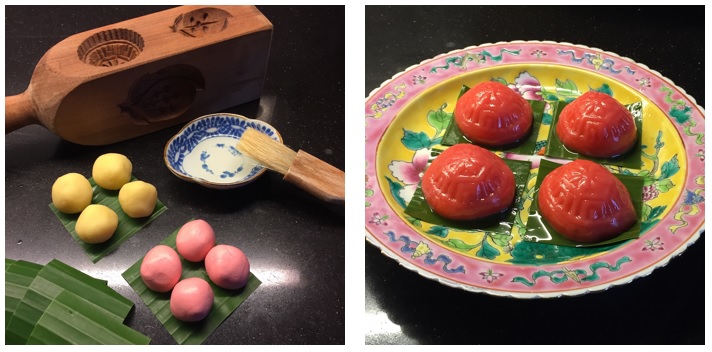Traditions & Culture
12 – Turtle Dumplings – Kue Ku

Kue Ku is an Indonesian sweetmeat with origins in Fujian province, China. It is known to the Hokkiens as “ang ku kue / 紅龜粿”, meaning “red turtle dumpling”. It is also found in Taiwan and overseas Chinese communities in Southeast Asia.
The dumpling is made of milled glutinous rice with a sweet filling made of mashed mung beans. Unlike the original version, coconut cream and pandan leaves are often included in the Chinese Indonesian recipe. The dumpling is shaped into a turtle shell using a wooden mould, and as such, it is sometimes known as “kue kura-kura”; the word for turtle and tortoise in Indonesian is “kura-kura”. For the Chinese, the turtle is considered sacred and symbolises longevity. The burial mound of traditional Chinese graves is often shaped like a turtle shell. Turtle shells are used for divinity and fortune telling.
Traditionally, these dumplings are coloured red, sometimes they are made green with a pink patch. They are used as an offering to deities and ancestors during feast days, particularly to the Lord of Heaven on the ninth day of the first lunar month (which falls on 6 February this year). These dumplings are also eaten during auspicious occasions – they are given to relatives during one-month celebrations of new-born babies and served at birthdays.
Christopher Ng, May 2017
Source:
- Tan, G.L. (1963): The Chinese of Sukabumi: a study of social and cultural accommodation. New York: Monograph Series


